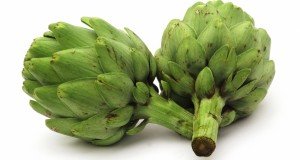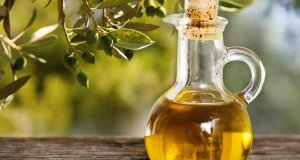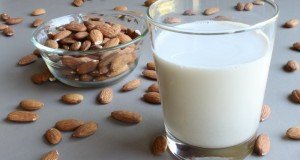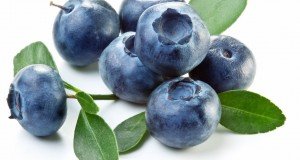Caprylic acid is an effective weapon against candida overgrowth and biofilms
(NaturalHealth365) With symptoms of joint pain, “brain fog” and depression, a stubborn Candida albicans fungal overgrowth can wreak absolute havoc on health and well-being. Like many pathogens, candida is capable of forming into biofilms – thin, adhesive layers of embedded microbes – and researchers have been working overtime to discover an antimicrobial treatment with low toxicity that is, at the same time, powerful enough to eliminate these resistant biofilms. Thankfully, with caprylic acid, they may have found it!
A new study has shown that caprylic acid, a nutrient found in coconut oil, can penetrate and eradicate persistent Candida biofilms. Keep reading to learn more about the surprising abilities of this beneficial fatty acid.
Disrupted microbial balance increases risk of candida overgrowth
The Candida albicans fungus exists normally as part of the microbiome – the community of microorganisms in the human body. When microbiome balance is disturbed, however, the Candida population can grow out of control – a condition medically known as candidiasis.
Symptoms of a Candida overgrowth can include digestive disorders such as diarrhea, bloating, and flatulence. Weight gain and food cravings can also occur, along with painful apthous ulcers (canker sores) and a white coating on the tongue. Fatigue, joint pain, chronic sinusitis and allergies may also be present, as well as mental and emotional symptoms such as confusion, depression, anxiety and mood swings.
One of the more serious complications of candidiasis is ‘leaky gut,’ or increased intestinal permeability.
Candida overgrowth can be triggered by the use of antibiotics, which kill off beneficial bacteria as well as pathogens. Insufficient sleep, chronic stress, exposure to environmental toxins and a diet high in sugar and refined flours can also set the stage for candidiasis.
Here’s an alarming fact: As the problem of antibiotic resistance continues to grow, researchers say that Candida has its own “superbug,” Candida auris. This drug-resistant microbe spreads through biofilms on objects in hospitals, such as catheters, feeding tubes and even bedrails.
New study: Caprylic acid demolishes biofilms of dangerous pathogens – including MRSA
Caprylic acid, also known as octanoic acid, is a medium-chain fatty acid found in coconut and palm oils, as well as in human breast milk and cow’s milk.
With potent antibacterial, antiviral, antifungal, anti-inflammatory and antioxidant properties, caprylic acid has the potential to combat both food-borne illnesses and infections in hospital settings.
Researchers have previously credited caprylic acid with the ability to support immune system function, protect the intestinal tract and improve the balance of digestive bacteria.
And, the latest research seems to show that it can stop Candida overgrowth – in its tracks.
In a study published in the peer-reviewed journal Frontiers in Microbiology, researchers found that a combination of caprylic acid and pectic acid (also known as polygalacturonic acid, a water-soluble fiber found in cell walls fruits and vegetables) completely eliminated pathogenic biofilms within 60 minutes of exposure – all without toxicity to cells.
Significantly, caprylic acid was effective against a veritable “rogue’s gallery” of infection-causing microorganisms.
In addition to eradicating Candida albicans biofilms, caprylic acid was effective against MRSA (methicillin-resistant staphylococcus aureus), as well as E. coli, Salmonella and P. aeruginosa bacteria.
Additional research confirms: Caprylic acid has strong effects against Candida
Additional studies have shown that caprylic acid can destroy bacterial and fungal biofilms alike.
A recent study published in Journal of Medicinal Foods confirms that caprylic acid – along with a closely-related fatty acid known as capric acid – can block the spread of Candida, while protecting tissues against oxidative damage.
The team noted that the pair of nutrients arrested the cell cycle of the pathogen, inhibited adhesion and suppressed biofilm formation. Although the new study is bringing renewed attention to caprylic acid, researchers have actually been lauding its antifungal effects for decades.
In 2001, a review published in Acupuncture and Electrotherapeutic Research credited a combination of caprylic and omega-3 fatty acids with outperforming Diflucan, the “gold standard” for treating fungal infections.
And, yet another study showed that caprylic acid reduced Staph biofilms on catheters by nearly 100 percent within 24 hours.
Finally, this beneficial fatty acid is demonstrating anticancer effects, with one recent study showing that a combination of caprylic and capric acids decreased cancer cell viability by up to 90 percent.
How can I use caprylic acid to treat Candida overgrowth?
Caprylic acid encourages beneficial bacteria while combating pathogens, making it a valuable tool for re-balancing the gut microbiome and returning Candida population to normal levels.
An integrative healthcare provider might recommend caprylic acid dosages in the amount of 500 to 1,000 mg, taken three times a day. Of course, always consult with your own physician before starting any new supplementary regimen.
(Tip: combining caprylic acid with undecylenic acid – another fatty acid with strong antifungal properties – potentiates the powers of both, making them more effective than either compound used alone. Adding omega-3 fatty acids, calcium and magnesium can increase the antifungal effect even more).
Some natural health experts advise combating Candida overgrowth with a “food cleanse” by eliminating grains, sugars, fruits, starches and alcohol from your diet for three to five days.
This (short-term) cleanse focuses heavily on plenty of fresh, steamed organic vegetables (with the exception of starchy vegetables such as potatoes, carrots and beets) – along with nice amounts of pure, filtered water.
Of course, consuming probiotic foods such as sauerkraut, kimchi and miso with live cultures can help repopulate the gut with healthy bacteria. Naturally, in some cases, a high-quality probiotic supplement may be needed.
With its varied symptoms – and its tendency to form stubborn biofilms – candidiasis can be a frustrating, puzzling condition that is difficult to diagnose and treat. The latest research highlights caprylic acid as a non-toxic, inexpensive and effective solution to Candida overgrowth.
Sources for this article include:











